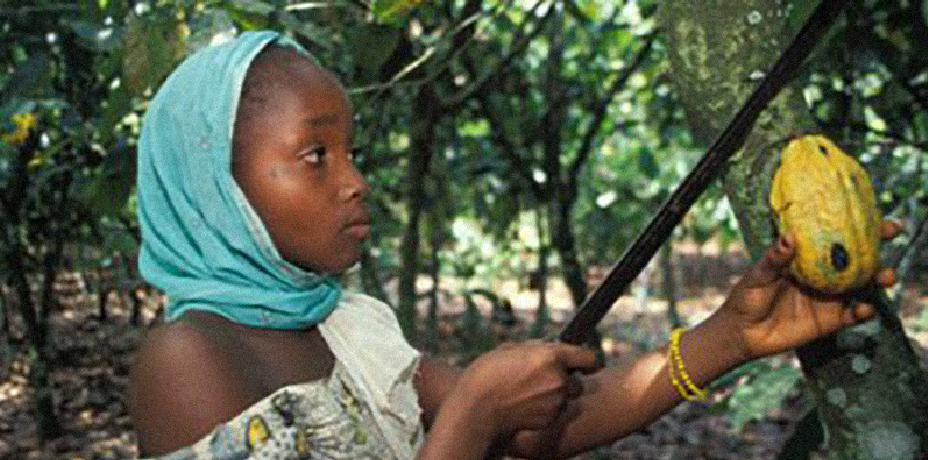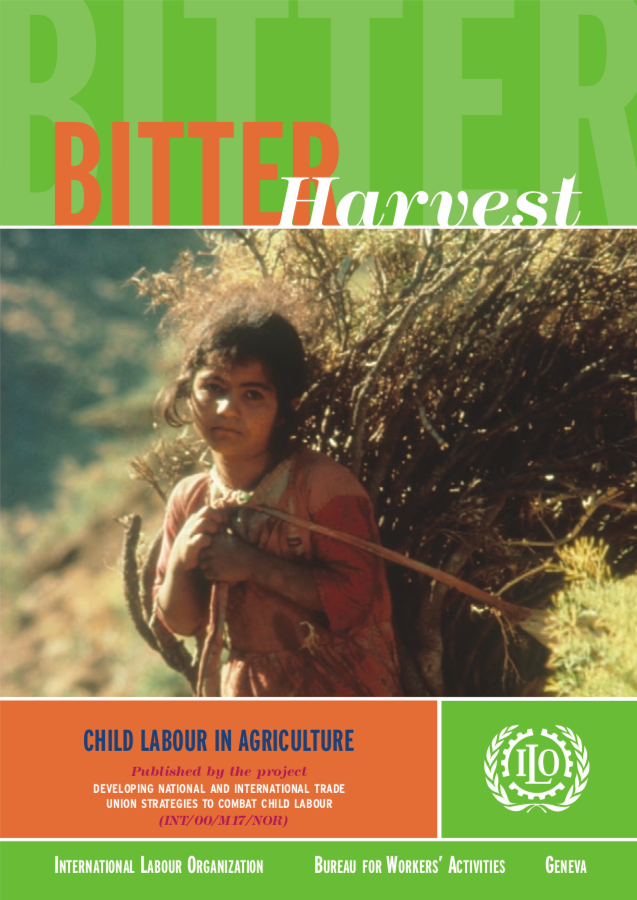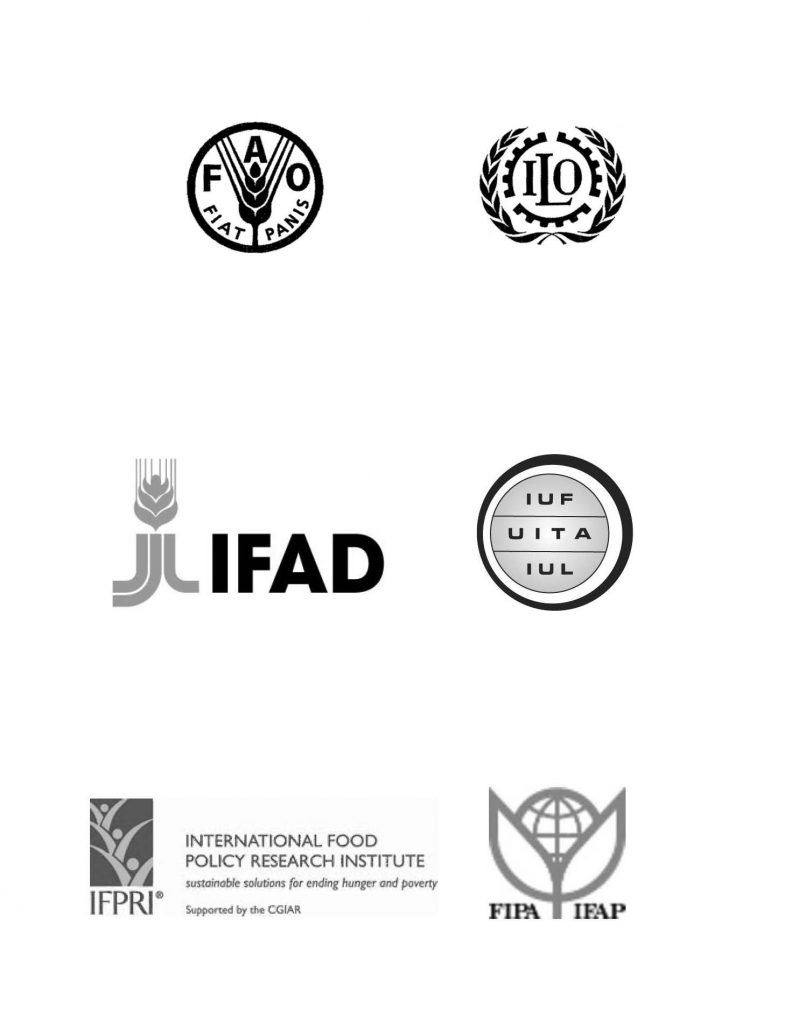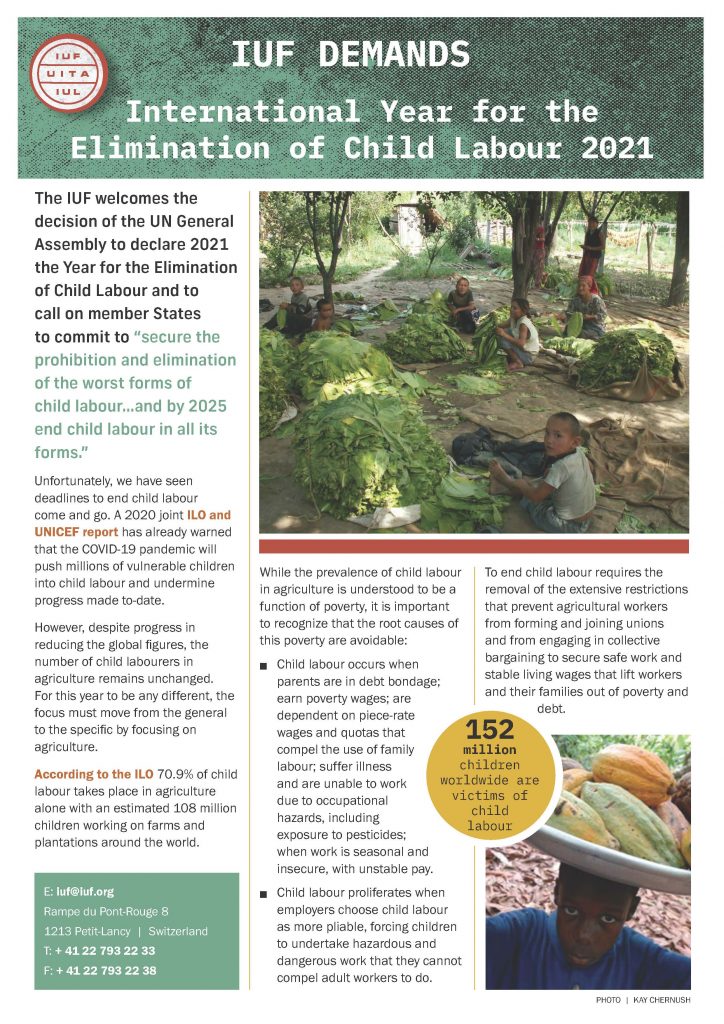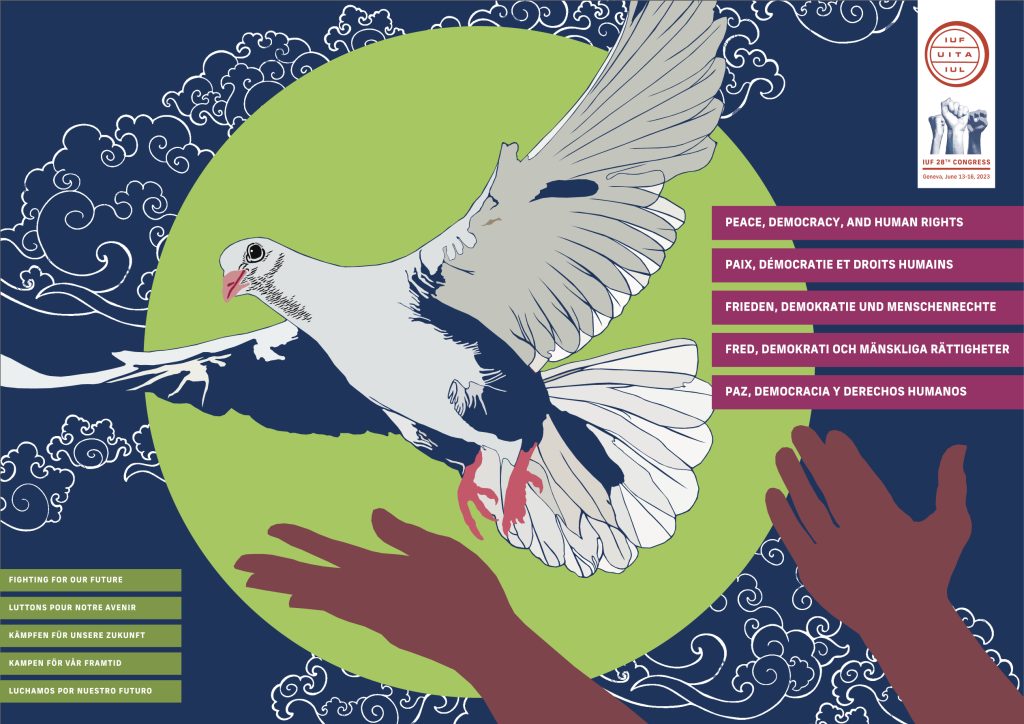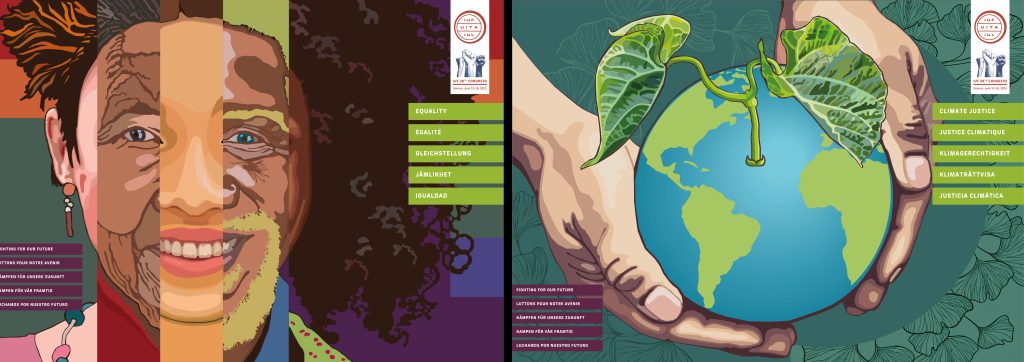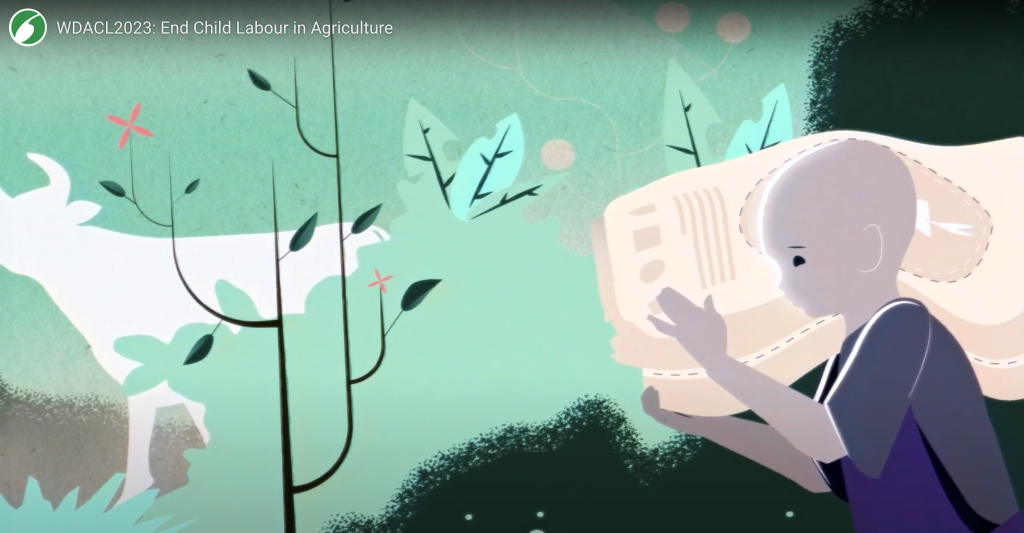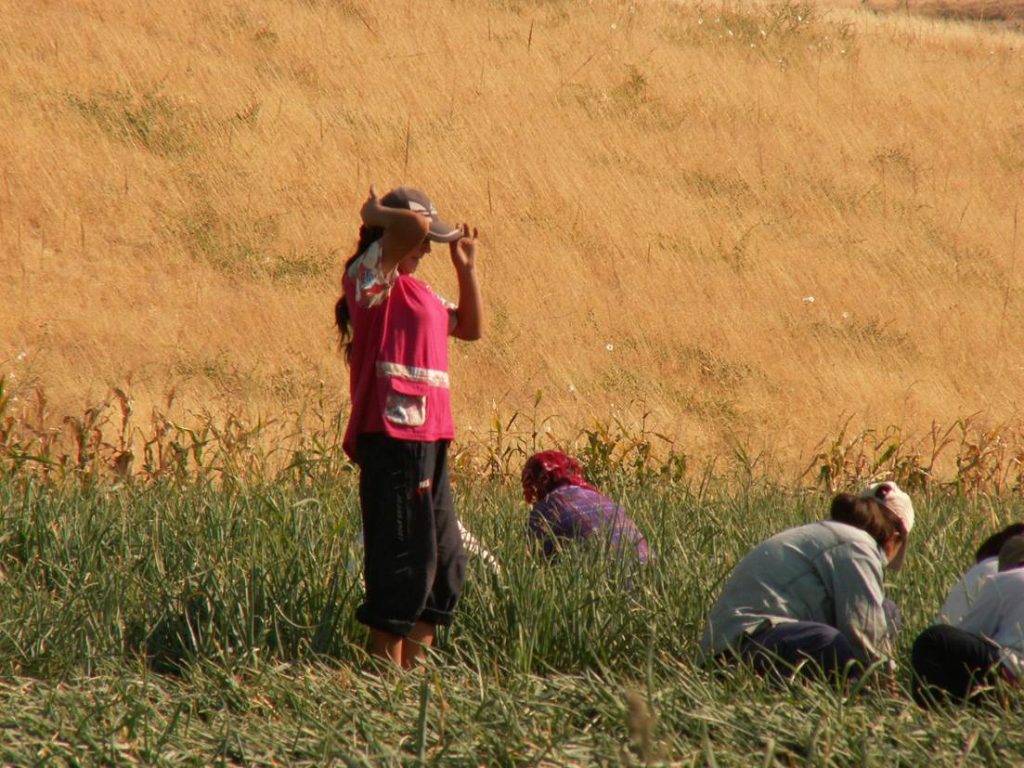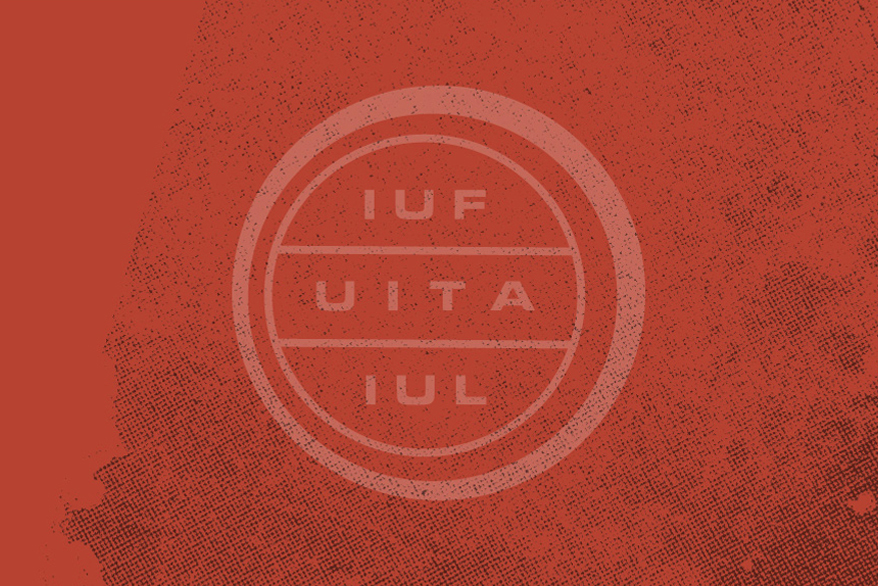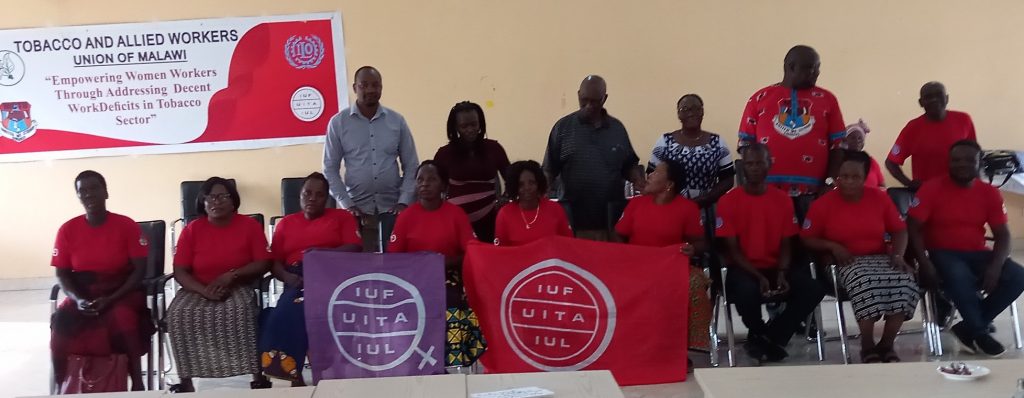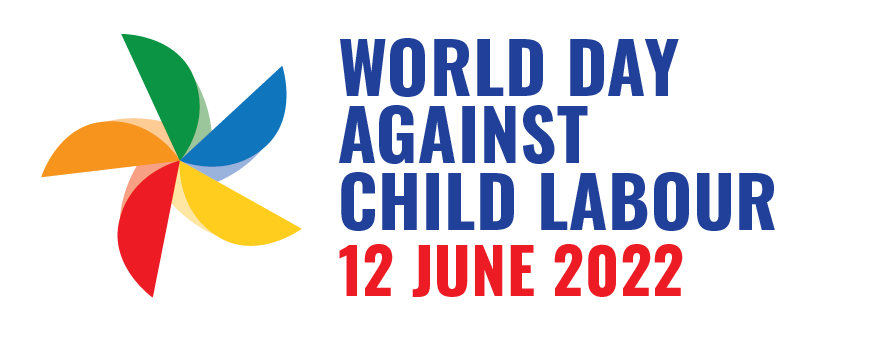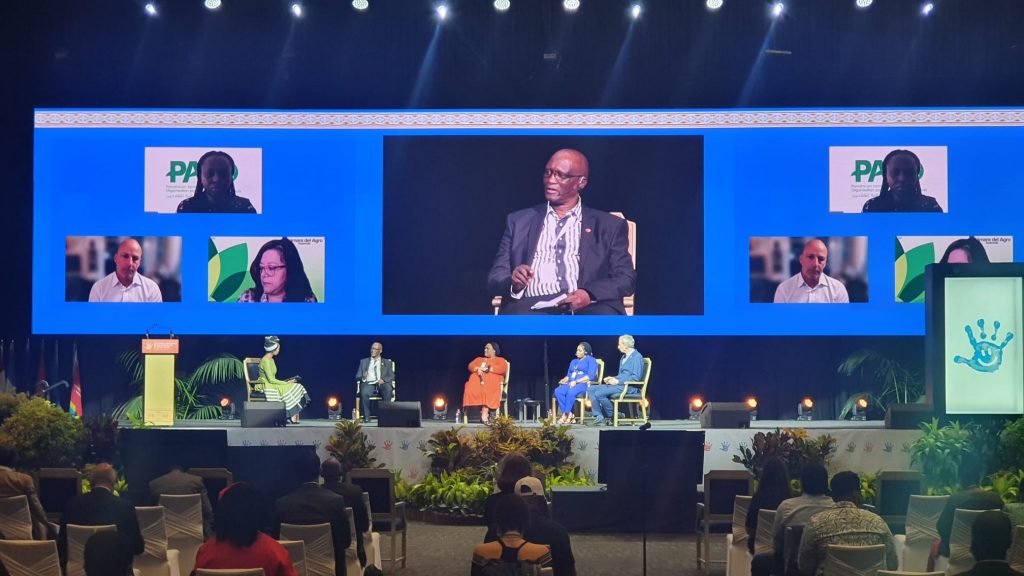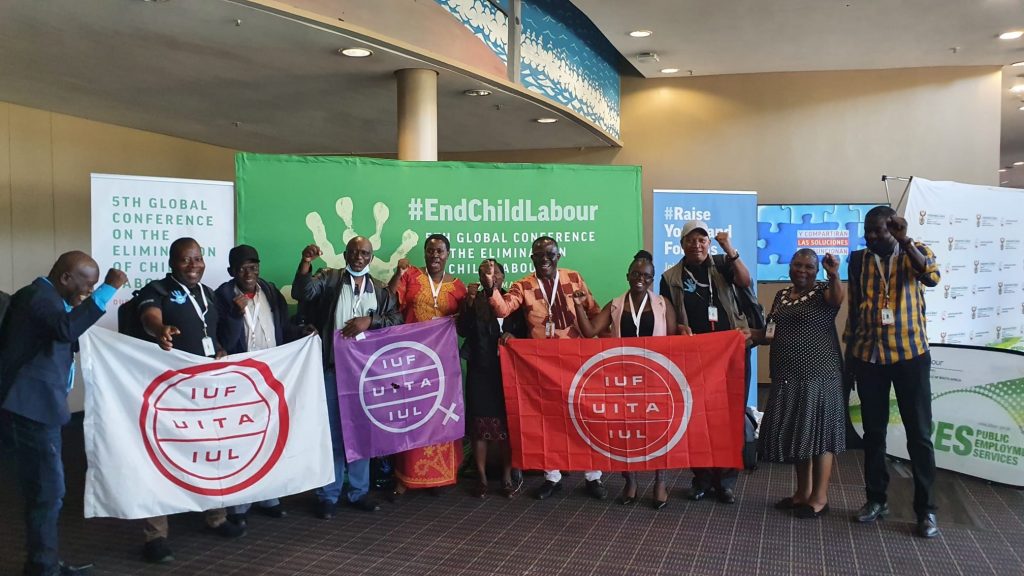Child labour occurs in all sectors where the IUF has membership, but the agricultural sector faces the greatest challenges.
-
71% of all child labour is in agriculture. 108 million girls and boys are currently working in the sector. Most of this child labour occurs on small, family farms, but 1 in 5 children work in commercial agriculture
-
The 1997 IUF Congress declared that "the elimination of all forms of child labour is the IUF's goal" and adopted a plan of action towards that goal which called on all affiliates to obtain clear commitments from employers not to use child labour and not to source from operations which use child labour
-
In the HRCT sector, the IUF has developed a model agreement against prostitution tourism, particularly focused on child prostitution
-
All indications are that the COVID-19 crisis could push millions of vulnerable children into child labour. The IUF principles, adopted in 1997, will continue to shape our response
The IUF recognizes that the scourge of child labour is both the result of societies facing extreme poverty and one of the factors which itself reinforces the continued underdevelopment of these societies.
The solution to the problem of child labour therefore lies in the general social development of those societies, and one factor in ensuring such social development is the strengthening of the labour movement in these countries.
Ultimately, strong and effective labour movements represent an essential pre-condition to eliminating child labour as well as other social deprivations also inevitably present in societies where child labour is most prevalent.
